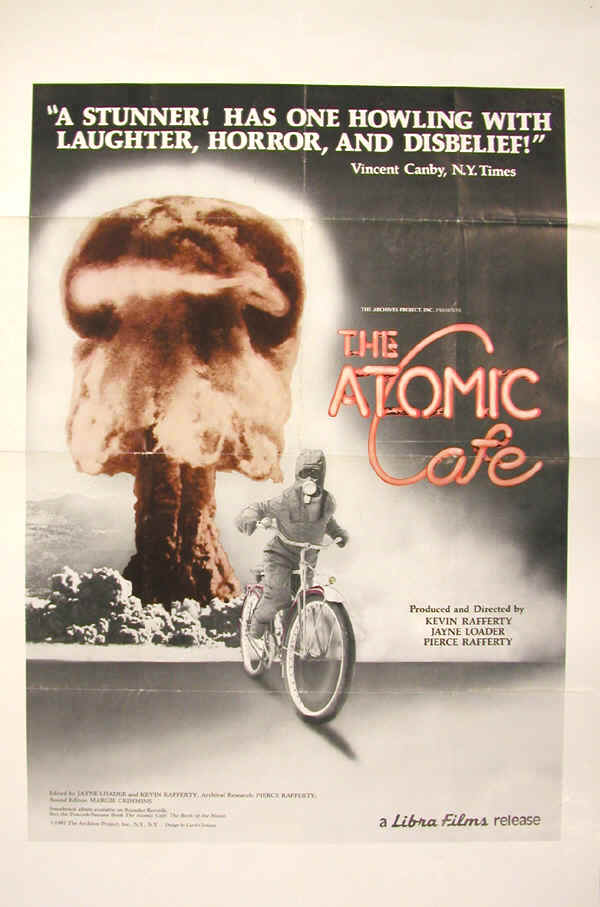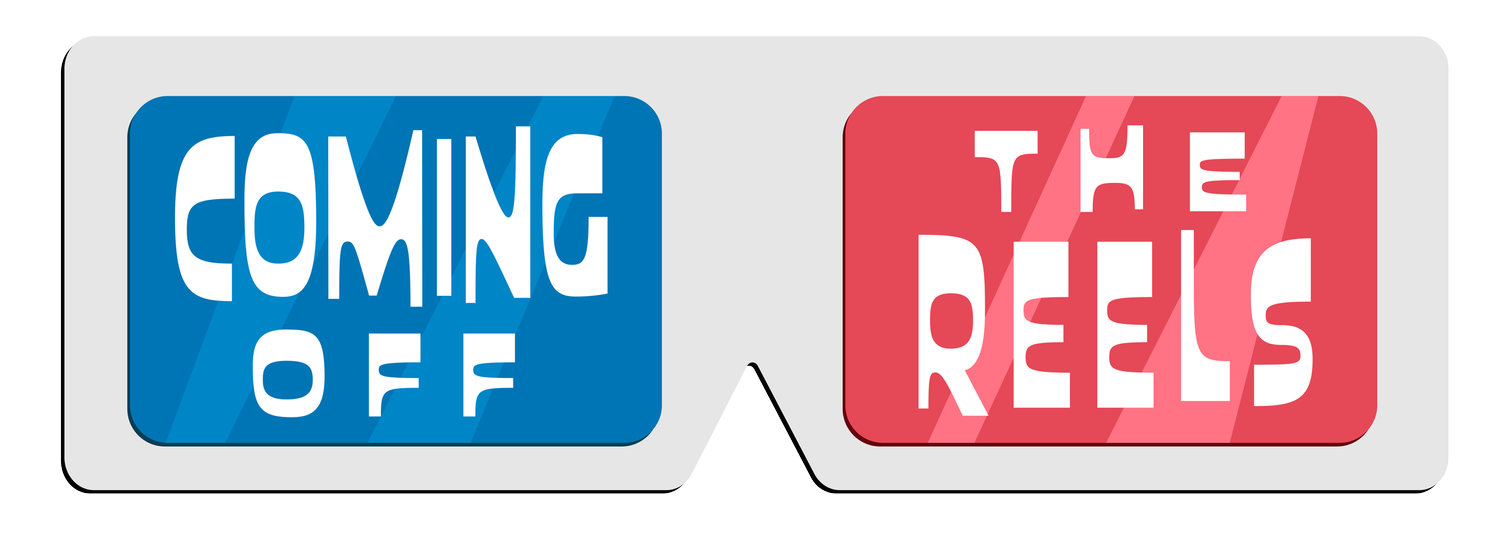Directed by: Jayne Loader, Kevin Rafferty, Pierce Rafferty Initially, The Atomic Café looks and sounds like an old film (not a video – an actual reel-to-reel film) your fifth-grade science teacher would trot out on a day s/he didn’t feel like actively teaching. Grainy, spotty images, quavery sound…narration that sounded like it had been read by a stuffy radio announcer trained in the pre-TV era.
And in truth, this 1982 documentary about the atomic bomb and its role in US war, propaganda peacekeeping in the 1940s and 50s should look old because pretty much all the footage comes from the archives. Interviews, military training films, other 'public information' films, if you will, patch together a fascinating story about how the atomic bomb and its consequences were 'sold' to the American public.
Early clips cover the first atomic bomb drop. According to interviews, the Enola Gay crew thought they were on a 'routine' mission and did not know exactly what they were carrying to unleash on the Hiroshima target until they were well on course. Then after dropping the bomb, some marveled at the sight. One soldier was filmed describing the thrill of the drop and explosion – 'pretty as a picture.'
It's very easy to watch this and clips of Americans dancing in the streets after the victory in Japan as with a damning eye. How dare these people act so flippantly about a bomb with such ridiculously destructive power? It's easy for us – citizens of a country juggling three foreign wars with minimal personal consequences – to condemn them. However, it's also easy to understand how excited people were for life to return to normal. Also, the next hour's worth of the documentary suggests most Americans probably had little to no idea exactly how destructive the atomic bomb was.
In fact, interviews captured in the documentary indicated Hiroshima was targeted primarily because it hadn't been bombed and scientists needed a better understanding of its effects in a 'real' environment. An additional test done at Bikini Atoll to study the impact of an atomic bomb explosion on animals and ships yielded some unexpected insights – at the expense of innocent bystanders. Shifting winds and a larger-than-expected blast radius treated a Japanese fishing boat crew to radiation poisoning and exposed native islanders already evacuated from the drop zone to radiation. News agencies reported no ill effects to the islanders, but footage shown in this documentary suggested otherwise.
Subsequent footage of the army sending eager young troops directly into an atomic blast zone – and telling them radiation is the least dangerous of the three main dangers of an atomic bomb (vs. the blast or heat) – convinced me this documentary was rightfully classified as a horror movie. Even worse was watching all the young troops scurry out of their foxholes and trot toward an awful tower of smoke, not knowing that the damage has probably already been done if they forgot to close their eyes or mouth during the blast and got a faceful of irradiated dirt. Army training films with horrendously wooden acting show characters waxing poetically about how an atomic blast is 'a wonderful sight to behold' made me feel ill.
In addition, heavy leveraging of the Cold War, Red Scare and the dangers of Communism were, presumably, also fed to the public. Propaganda films showed the Statue of Liberty exploding, a giant fist crushing symbols of democracy. Another program challenged potential naysayers of the 'domino effect,' illustrating through a daylong experiment in a small Wisconsin town, how easy it would be for communists to take over even in America. Notably, the Communist experiment was sponsored by two California malls featuring lots of free parking for those cars – things Americans have a lot of that Communists don't.
Finally, the power of fear and ignorance continues to provide interesting fare. Video of 'duck and cover' drills in case of nuclear attack are somewhat laughable – as are a demonstration of a children's lead-lined protective suit complete with head protection for the post-nuclear world. Also in an era where most houses don't have basements to protect really well from a tornado, much less a nuclear attack, it was interesting to see advertising and advice for the largely ineffective fallout shelters, such as: "Be sure to include tranquilizers to ease the strain and monotony of life in a fallout shelter. A bottle of 100 should be sufficient for a family of four. Tranquilizers are not a narcotic, and are not habit-forming."
Overall, this documentary reminds me of a Patton Oswalt routine where he's talking about how sometimes science is all about "could of" instead of "should have." One quote from the film mirror this, saying, 'science has outpaced what we can emotionally and intellectually handle.' I think this is a good thing to consider when watching the film – and to continually keep in mind as modern war keeps evolving.
If you:
· Like History Channel-style fare
· Like science
· Have a somewhat pessimistic/critical view of human nature, war and culture
Put it in the queue!
If you:
· Are overly sensitive about political correctness (i.e. will flip out over the use of 'Japs' and depiction of native islanders as simpleminded)
· Are still afraid that Communists will take over the world
· Don't understand that sometimes documentaries can be propaganda themselves
Don't put it in the queue.
Written by Jennifer Venson
